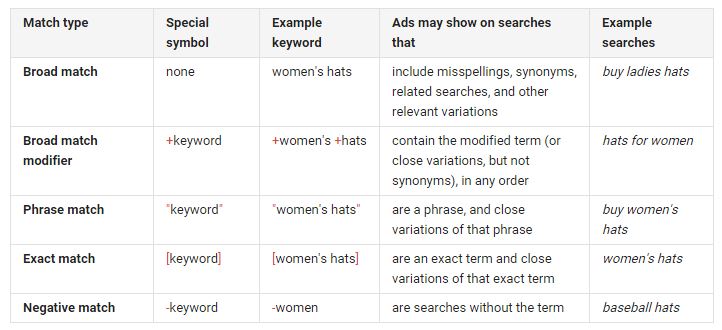How to tell if your affiliates are brand bidding
Dec 8, 2015
Affiliate Managers, Agencies, Marketing Teams

 Yes, your affiliates are your partners in marketing. But that doesn't mean they won't bend (or break) your program rules to make an extra buck or two.
It can be tricky to tell if an affiliate is brand bidding on purpose or by accident. This gray area occurs because an ad can appear on a search engine results page (SERP) due to match type or a ‘feature’ called auto-matching.
What is Match Type?
Match type is a designation assigned by an advertiser when creating an ad—in this case the advertiser is your affiliate. Here is a good introduction from Google AdWords:
Yes, your affiliates are your partners in marketing. But that doesn't mean they won't bend (or break) your program rules to make an extra buck or two.
It can be tricky to tell if an affiliate is brand bidding on purpose or by accident. This gray area occurs because an ad can appear on a search engine results page (SERP) due to match type or a ‘feature’ called auto-matching.
What is Match Type?
Match type is a designation assigned by an advertiser when creating an ad—in this case the advertiser is your affiliate. Here is a good introduction from Google AdWords:
 How Does Auto-Matching Occur?
Auto-matching is a feature provided by both Google and Yahoo which allows the search engine to automatically select new keywords for you without the advertiser’s advance permission. The new keywords are selected from various places including the ad copy text, display URLs, landing page and/or common typos and related terms. In other words, Google and Yahoo, by way of the auto-matching feature, can show ads on keywords that your affiliate did not intend to sponsor.
How Can I Control Match Type?
Unfortunately, a searcher cannot control the match-type trigger for paid ads. This is controlled by the search engine. Therefore, a marketer cannot easily check on their own to see who is bidding on selected keywords.
What should you do? Marketers must look for other evidence to validate whether brand bidding has intentionally occurred. A Compliance Monitoring service is the best tool for identifying intentional brand bidding. Things that marketers can learn:
How Does Auto-Matching Occur?
Auto-matching is a feature provided by both Google and Yahoo which allows the search engine to automatically select new keywords for you without the advertiser’s advance permission. The new keywords are selected from various places including the ad copy text, display URLs, landing page and/or common typos and related terms. In other words, Google and Yahoo, by way of the auto-matching feature, can show ads on keywords that your affiliate did not intend to sponsor.
How Can I Control Match Type?
Unfortunately, a searcher cannot control the match-type trigger for paid ads. This is controlled by the search engine. Therefore, a marketer cannot easily check on their own to see who is bidding on selected keywords.
What should you do? Marketers must look for other evidence to validate whether brand bidding has intentionally occurred. A Compliance Monitoring service is the best tool for identifying intentional brand bidding. Things that marketers can learn:

 Yes, your affiliates are your partners in marketing. But that doesn't mean they won't bend (or break) your program rules to make an extra buck or two.
It can be tricky to tell if an affiliate is brand bidding on purpose or by accident. This gray area occurs because an ad can appear on a search engine results page (SERP) due to match type or a ‘feature’ called auto-matching.
What is Match Type?
Match type is a designation assigned by an advertiser when creating an ad—in this case the advertiser is your affiliate. Here is a good introduction from Google AdWords:
Yes, your affiliates are your partners in marketing. But that doesn't mean they won't bend (or break) your program rules to make an extra buck or two.
It can be tricky to tell if an affiliate is brand bidding on purpose or by accident. This gray area occurs because an ad can appear on a search engine results page (SERP) due to match type or a ‘feature’ called auto-matching.
What is Match Type?
Match type is a designation assigned by an advertiser when creating an ad—in this case the advertiser is your affiliate. Here is a good introduction from Google AdWords:
 How Does Auto-Matching Occur?
Auto-matching is a feature provided by both Google and Yahoo which allows the search engine to automatically select new keywords for you without the advertiser’s advance permission. The new keywords are selected from various places including the ad copy text, display URLs, landing page and/or common typos and related terms. In other words, Google and Yahoo, by way of the auto-matching feature, can show ads on keywords that your affiliate did not intend to sponsor.
How Can I Control Match Type?
Unfortunately, a searcher cannot control the match-type trigger for paid ads. This is controlled by the search engine. Therefore, a marketer cannot easily check on their own to see who is bidding on selected keywords.
What should you do? Marketers must look for other evidence to validate whether brand bidding has intentionally occurred. A Compliance Monitoring service is the best tool for identifying intentional brand bidding. Things that marketers can learn:
How Does Auto-Matching Occur?
Auto-matching is a feature provided by both Google and Yahoo which allows the search engine to automatically select new keywords for you without the advertiser’s advance permission. The new keywords are selected from various places including the ad copy text, display URLs, landing page and/or common typos and related terms. In other words, Google and Yahoo, by way of the auto-matching feature, can show ads on keywords that your affiliate did not intend to sponsor.
How Can I Control Match Type?
Unfortunately, a searcher cannot control the match-type trigger for paid ads. This is controlled by the search engine. Therefore, a marketer cannot easily check on their own to see who is bidding on selected keywords.
What should you do? Marketers must look for other evidence to validate whether brand bidding has intentionally occurred. A Compliance Monitoring service is the best tool for identifying intentional brand bidding. Things that marketers can learn:
- Your Brand is the Keyword. Look to see if there are any instances where the affiliate’s ads appear on your brand name by itself in a keyword search, including typos, and variations with and without the “.com” extension. Then look to see if this is heppening on your brand-plus terms.
- Your Brand Appears in redirects & landing URLs. Review all URLs that lead to the landing page, including the display URL, the destination URL, all redirects, and the final landing page URL. If your website URL or your brand name by itself appears in the URL, then it is very likely that the affiliate is bidding on your brand terms.
- Look for Keyword Tagging. Affiliates often embed either the keyword or the category of the keyword (e.g. ad group) into a tracking parameter in the URL string to track the source of the traffic. Keyword tracking parameters can either be dynamic—inserted by the search engine using a variable, or fixed—inserted by the affiliate at the time of ad creation.
- Look for bold text in the ad. Ad text appears bolded when that same text is included in both the search phrase and the ad. Therefore, you could look for the non-brand part of the search term. If there is ad text that matches the non-brand portion of the search phrase and it is not in bold, then the affiliate was broad matching on your brand.
- Look for your brand in ad copy. If your brand is included in the ad copy,it is very likely that the affiliate intended to appear on your brand name.
- Monitor the phrase without your brand. Remove your brand from the phrase and see if the affiliate shows up with the same ad copy on the non-branded version. If the answer is no, then you can be sure the brand was the intended target. If the answer is yes, then you will need to do more to determine if the affiliate brand bids and also bids generically.












